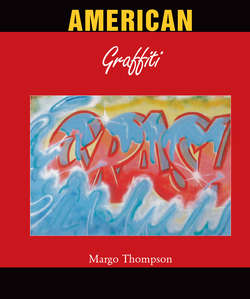Читать книгу American Graffiti - Margo Thompson - Страница 4
На сайте Литреса книга снята с продажи.
Introduction
Primitivism
ОглавлениеOne of the strategies modern art has used to renew itself is primitivism, the appropriation of forms and motifs from non-Western cultures that are constructed as less civilised and closer to nature than Western society. For example, in the early twentieth century Picasso and Matisse solved the problem of how to represent a modern female form by referencing tribal sculpture from Africa. Primitivism is an attitude that reveals much about white, European society, and next to nothing about the non-European cultures that it has dubbed ‘primitive’. Primitivism does not account for the power and complexity of African, Oceanic, Native American, or Caribbean cultures, but labels them exotic and finds in them certain predictable traits: these Others are represented in the West as simpler, more intuitive, less inhibited. Very often, these stereotypical qualities are judged desirable by the Westerner, such as Gauguin’s Tahitians painted to represent mysticism and sensuality. In the so-called primitive Other, the primitivist finds his preconceptions about himself as sophisticated and civilised and the Other as naïve and natural to be confirmed. Subway writers knew that art world players viewed them with fascination and suspicion but with little real awareness of writing culture or even what it meant to depend upon the subway for transportation. The relationship of dominant culture to subculture that framed graffiti art is paradigmatically primitivist.
Oldenburg’s and Mailer’s choice of words in the quotations above demonstrate how primitivism paved the way for the acceptance of graffiti art in the early 1990s. Graffiti, they marveled, is a ‘bouquet from Latin America’, made by ‘tropical peoples’ who import the ‘giant trees and pretty plants of a tropical rainforest’, the ‘jungle’, to the grey, mechanised urban environment. To Schjeldahl, it is likewise a force of nature, ‘volcanic’ and ‘unstoppable’. Most of the writers were African American, Puerto Rican or South American, or of mixed racial and ethnic heritage. Their cultural difference was reinforced and made visible in the writers’ racial or ethnic identity that set them apart from the predominately white art world. If race was not specifically mentioned in accounts of graffiti art, it was sufficient to locate the writers as ‘ghetto kids’ from the Bronx or Brooklyn to secure their identity as non-white.
TAKI 183, Early tag, date unknown. Marker pen on wood. New York.
Various artists, Tags, date unknown. Various materials on truck. New York.
Unknown, The Painters: Parts 2–3, date unknown. Paint, ink stamp and paste-up on building. New York.
In the primitivist scheme, the writers offered fresh perspectives as outsiders to American society. They held a mirror up to the hegemonic culture. Thus it mattered when the artists referenced the mass media or high culture in their compositions, because as a point of contact it helped make the subculture legible to its new audience. Graffiti artists drew exclusively upon American kitsch: cartoons and underground comix, heavy metal music, science fiction illustrations, and psychedelia. But because they did not often borrow from elite Western culture in their paintings, subway writers found it difficult to discourage the belief that they were in fact primitives. Consequently, their moves to develop more sophisticated themes and advance stylistically received little credit: a primitive was locked in a fixed position with regard to dominant culture, authentic but immobile. A primitivist – a Picasso, Gauguin, Basquiat, or Haring – chose to work with “low” culture’s material, and therefore had room to maneuver.
